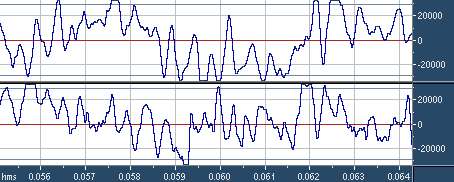Clipping
Clipping is a phenomenon that occurs in digital audio when the amplitude value of a signal exceeds the maximum level that can be represented by the current bit resolution. In 16bit digital audio (cd-audio), the sample values can be presented between the values of -32768 to 32767.
Any sample which should get higher or lower value than this (for whatever reason), will get the maximum/minimum value instead. This causes the signal to distort, and appears in the waveform display as a "chopping-off" of the top or bottom of the waveform. The audible result of sequential max or min values is a static-like distortion.
A correctly mastered CD does not have sequential max or min samples. Also, clipping is not always audible. It depends on how severe the clipping is, in other words how many samples are getting the same maximum/minimum values sequentially. Maximum/Minimum values are considered as "possible clipped samples" by analysis tools, but only one max or min value doesn't mean clipping.
Lossy audio encoding and decoding can cause the highest/lowest sample values to go over the allowed limit (in practice having the sequential max/min values), which may lead to clipping seen by analysis tools, or even audible clipping. But whether the clipping is truly audible or not is a totally different thing. There are different methods to avoid clipping in lossy audio. Look at the specific audio format answers how to best avoid clipping in each case.

